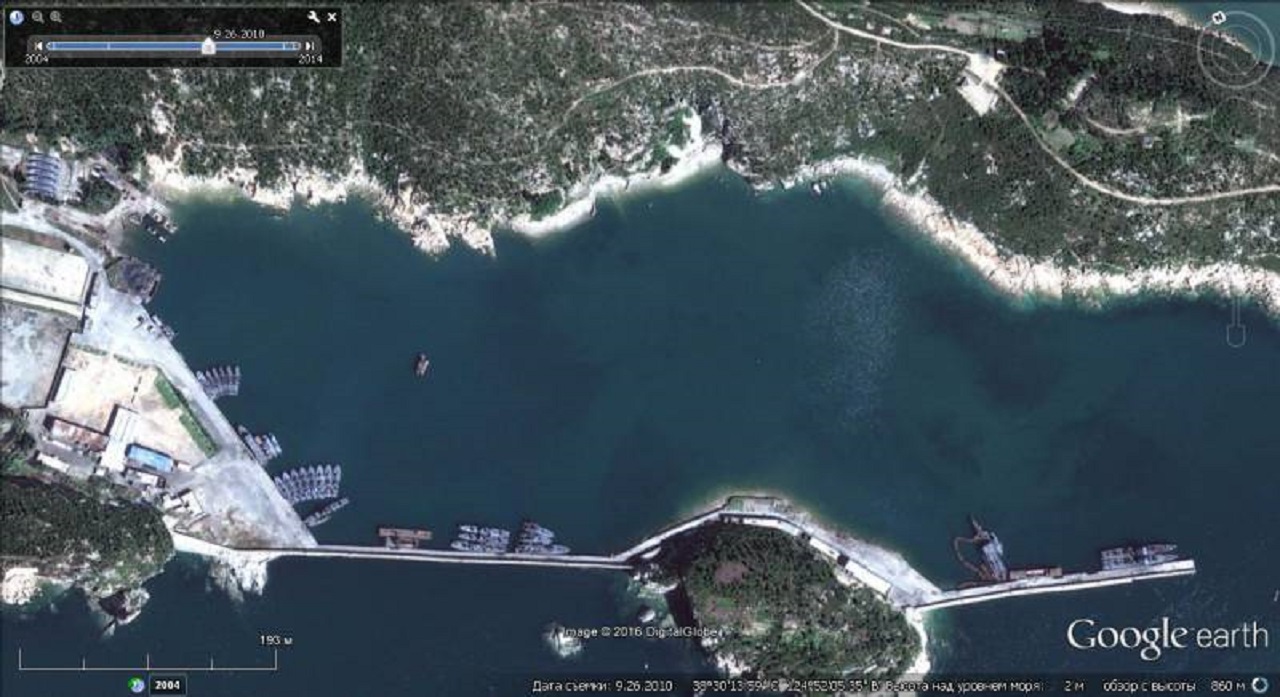
Missile and aviation potential of the DPRK, part 2
Missile and air-missile potential of the Democratic People's Republic of Korea
The Air Defense Forces of the Korean People's Army were created in the late 1950s. When the Korean War broke out in 24, she had a separate anti-aircraft artillery regiment equipped with 37 12mm guns and 85 36mm guns. The regiment also had 12,7 mm anti-aircraft machine guns, and all this equipment came from supplies from the USSR.
The Korean War was mainly an air war, so during its course, North Korean ground defenses dynamically grew in number and were systematically improved. In anti-aircraft artillery regiments, radar stations P-8 were introduced for the initial detection of air attack weapons and radar stations SON-2, SON-3 and SON-4 for anti-aircraft fire control. In the mid-57s, 100-mm and 10-mm anti-aircraft guns, P-9 preliminary detection radars and SON-12,7 artillery radars were additionally put into service. In turn, the 14,5mm machine guns were supplemented by XNUMXmm heavy machine guns (single, double and quadruple mounts). In most cases, these funds are used by the North Korean army today.
The process of introducing missile weapons into the Air Defense Forces began in the 75s, when the first SA-1962M Dvina medium-range anti-aircraft missile systems were delivered. In total, in 1973-38, 75 squadrons (sets) of SA-1962M were delivered from the USSR (2 - 1966, 8 - 1967, 4 - 1971, 18 - 1973, 6 - 10). They were accompanied by 75 technical squadrons SA-1962M (year 1 - 1966, year 2 - 1967, year 1 - 1971, year 4 - 1973, year 2 - 1243). Together with them, 750 W-8 anti-aircraft guided missiles (plus 75 training missiles) were delivered. In the seventies, the SA-XNUMXM kits were modernized three times. A repair shop was set up near Pyongyang to service them.
In 1986, they were equipped with three S-75M3 Volga squadrons with an accompanying technical squadron. 180 W-759 anti-aircraft guided missiles were delivered in two batches: 1986 in 108, 1990 in 72. Four training missiles of this type were also purchased. In the SA-75M and S-75M3 squadrons, P-12 radars are used for initial target detection, with PRV-11 radio altimeters.
A year earlier, deliveries of S-125M1A Pechora short-range anti-aircraft missile systems began. In total, six sets of this type were imported from the USSR: 1985–3 and 1987–3, which were accompanied by two technical units. Together with them, 216 W-601PD combat missiles and 14 training missiles were received (in two equal batches: 2 x 108 and 2 x 7). S-125M1A squadrons use P-12 radar stations supplemented by P-15 low-altitude radar devices for the initial detection of air attack weapons. Measurement of the target flight altitude is provided by the PRW-11 radio altimeter.
In 1987, the first long-range anti-aircraft missile regiment S-200VE was put into service, and in 1990, the second. These were two-divisional regiments, accompanied by technical units. For each of them, 36 W-880WE combat missiles and seven training missiles were purchased. The initial detection of air attack means is provided by the P-14 radar station, and the target flight altitude is measured by the PRV-17 radio altimeter.
The Korean People's Army also has Strzała-2M, Strzała-3, Igła-1 and Igła MANPADS, and the Strzała-2M and Igła-1 kits were produced locally under a Russian license. According to Western estimates, their total number is about 5000 (for comparison: the North Korean army has about 8800 anti-aircraft guns).
Although Russia and China are reluctant to sell their latest fighter jets to the DPRK, they have supported it in modernizing its ground-based air defense systems. The PRC sold to the DPRK a regiment of S-300PT anti-aircraft missile systems (16 launchers with a stock of missiles and 4 fire control radars; two squadrons, four batteries), and to Russia a license for the production of anti-aircraft guided missiles. On this basis, the DPRK created its own complex KN-06 ("Ponge-5") with an improved missile. Russia sold a license for an early version of a missile with a radio command guidance system, without a missile tracking function, and in order to fully use the energy potential of the missile in the DPRK, it additionally received a passive radar homing head. Elements of the kit have been demonstrated at various parades since 2010, while the official adoption of the KN-06 into service took place only last year. According to unconfirmed reports, by that time the North Korean industry had produced about 200 missiles.
The DPRK airspace control system is based on Russian early warning stations. The largest number of P-14 radars, of which North Korea has 10 (P-14F - 3 and Oborona-14 - 7). It is supplemented by two stations "Kabina-66M". In addition, as part of the air defense there are two ST-68U medium-range preliminary detection radar stations. In turn, for the initial detection and guidance of fighter aircraft, the North Korean air defenses first used the P-25 radar stations, and then introduced the P-35 and P-37.
